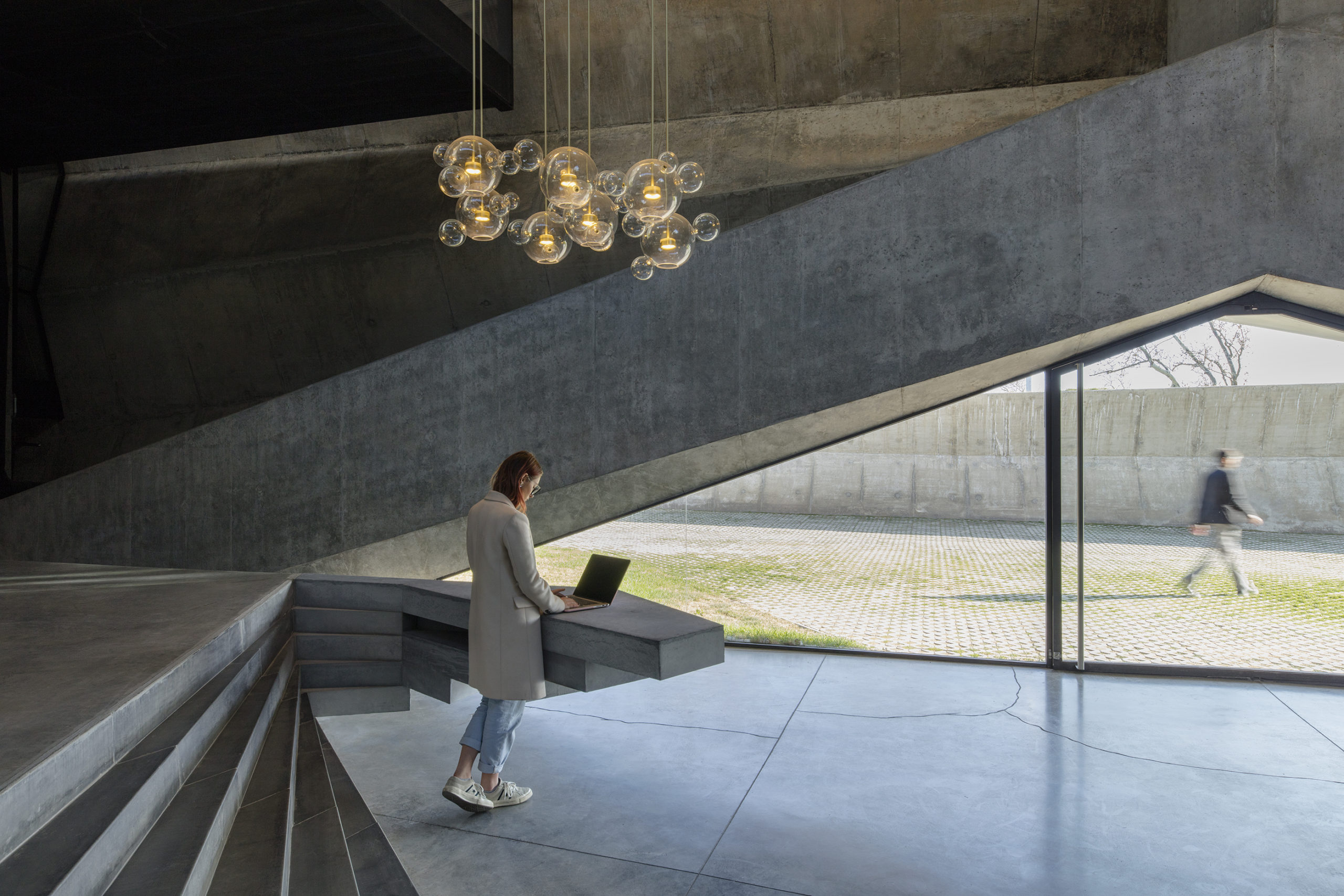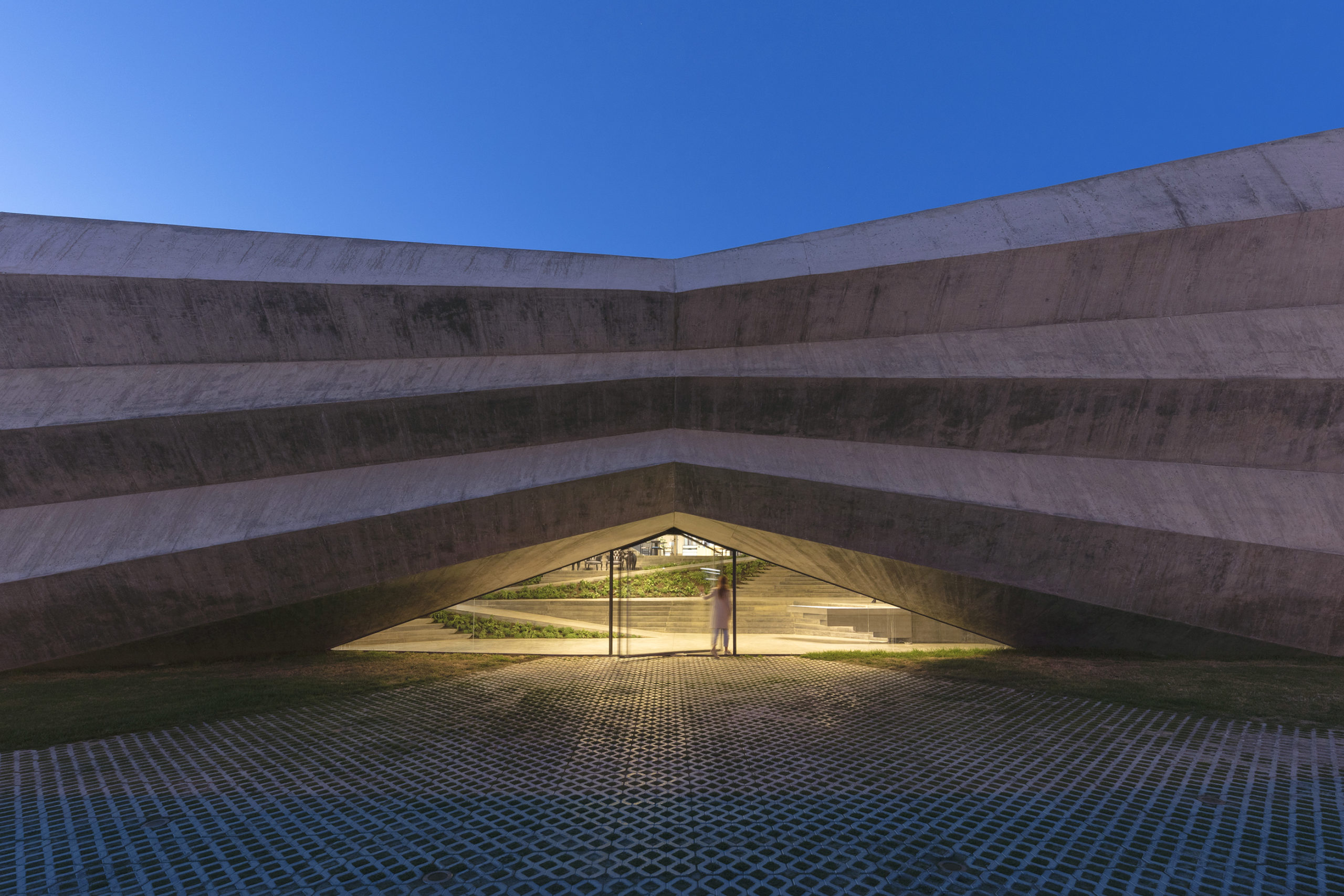The latest edition of “Architizer: The World’s Best Architecture” — a stunning, hardbound book celebrating the most inspiring contemporary architecture from around the globe — is now shipping! Secure your copy today.
With the launch of the 11th Annual A+Awards entry period (submit your project here), it’s the perfect moment to take a look at what constitutes an award-winning architectural project. One of the stand-out winners in A+Awards history is the Meama Coffee Production Plant, which swept the 2020 A+Awards with FIVE different merits in three separate categories:
- Popular Vote and Jury Winner in Architecture +Concrete;
- Popular Vote and Jury Winner in Office Interiors (>25, 000 sq ft);
- Popular Vote Winner in Typology Office Building Low Rise (1-4 Floors)
Architectural innovation has long been linked to the patronage of companies, and the Meama Coffee Production Plant, designed by the Georgian firm Khmaladze Architects, represents a new step in this established alliance.
The Meama Coffee Production Plant embodies an outstanding combination of the criteria, and its many exceptional details appealed to our global-spanning jury of diverse industry leaders as well as the wider voting public. As you consider which project to enter for this year’s A+Awards competition, delve into five central aspects that contributed to the Khmaladze Architects’ outstanding success, and prepare to be inspired:
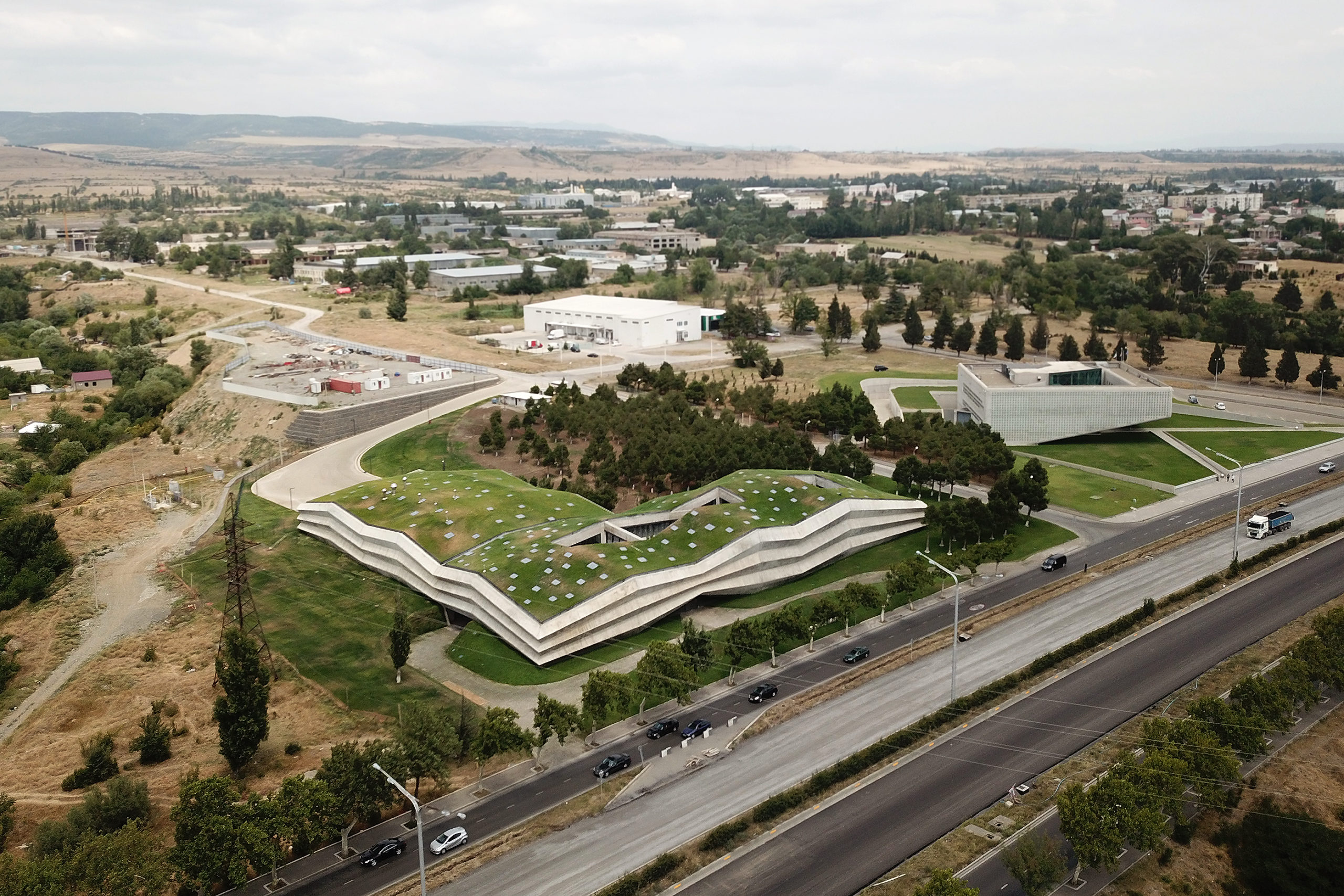
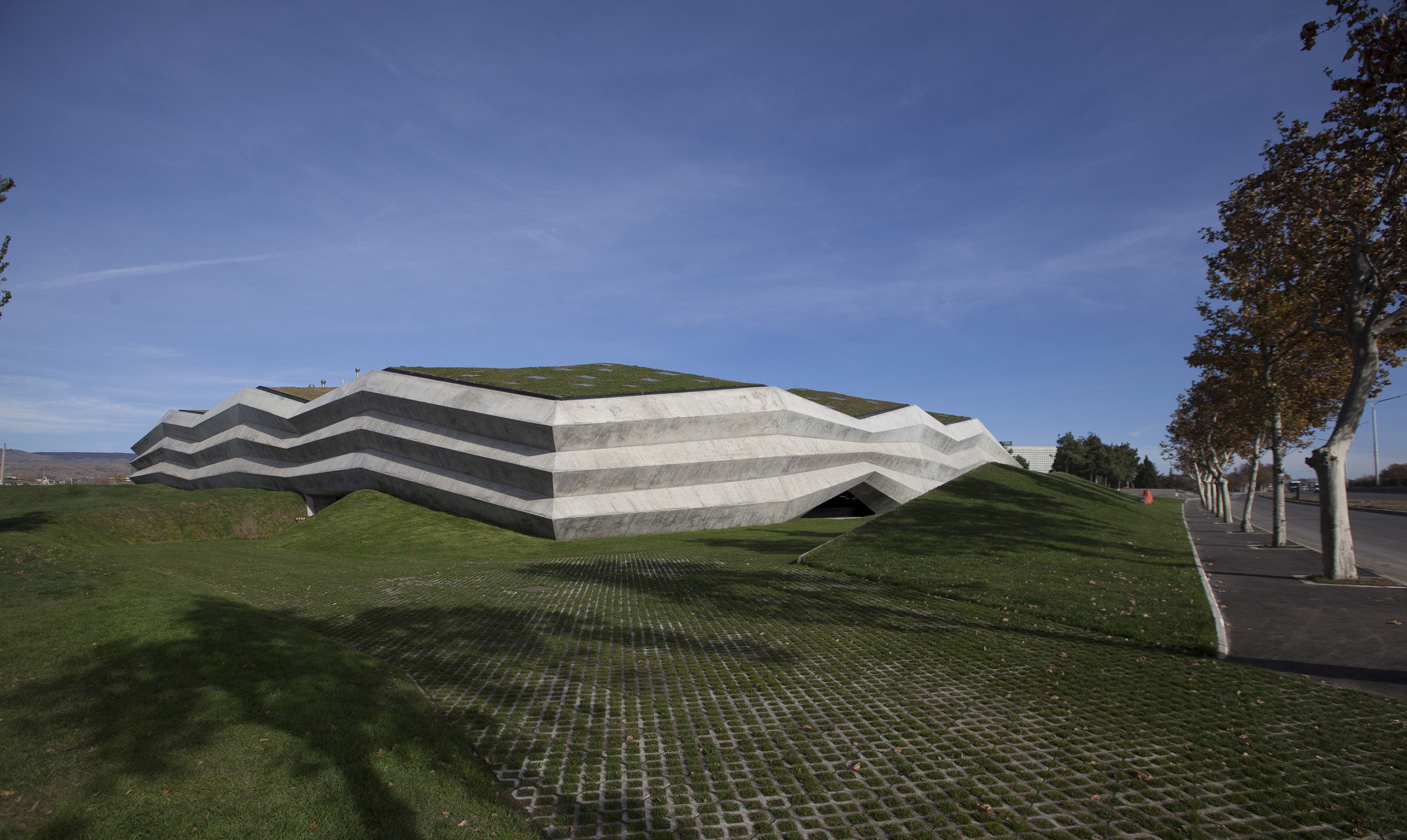
1. Make a Visual Statement
Founded in 2016 and growing ever since, Meama is the largest coffee producer in Georgia. It imports coffee beans to Tbilisi, where they are roasted and ground, then processed into coffee capsules. The company thus required a central headquarters that could accommodate a range of tasks: production areas, offices and a coffee tasting room. Thinking outside of the boxiness typical of the factory typology, Khmaladze built on the unusual program to create a memorable visual identity for the young brand.
An all‐concrete façade wraps around the program like a ribbon, folding to produce double curved geometry with no visible openings. The effect is a strong image of permanence; yet, soft greenery offsets the monolithic mass at all levels — from the back side that opens up towards the pine forest to the expansive green roof that helps it to blend into its surroundings. The eye-catching geometric contours of the concrete are further softened by the undulating form of the roof, whose higher areas accommodate factory machinery of various sizes, and lower dips create an interesting shape, both inside and out.
Sitting on a popular highway that connects the city to the airport, the Meama Coffee Production Plant could have been another boxy factory on the outskirts of the city; instead it is an intriguing and visually stunning point of pride for both the company and residents of Tbilisi.
2. Exhibit Material Mastery
The innovative use of the concrete and its material expression allowed Khmaladze Architects to explore new aesthetic and spatial programs in their design, amounting to a light-filled and humanistic working environment.
A one‐way waffle slab roof — spanning up to 16 meters — literally and figuratively carries the design. The technology not only bears the weight of the planted greenery above, but it also serves as an anchor for the steel floor slabs that are suspended by steel rods on various levels beneath it. It allows for large, unobstructed and irregularly shaped spaces within, which are communicated externally by the uninterrupted span of the concrete façade. Meanwhile, the cast-in-place concrete folds are actually double walls that house an insulating layer in between.
To protect the extensive reinforced concrete structures, both below-grade foundation slabs and the soil-covered green roof, all concrete in the project was treated with PENETRON ADMIX. Providing crucial waterproofing and corrosion protection, this innovative treatment imbues the concrete with a sort of “self-healing” ability to seal all cracks, pores and capillaries for the indefinite future.
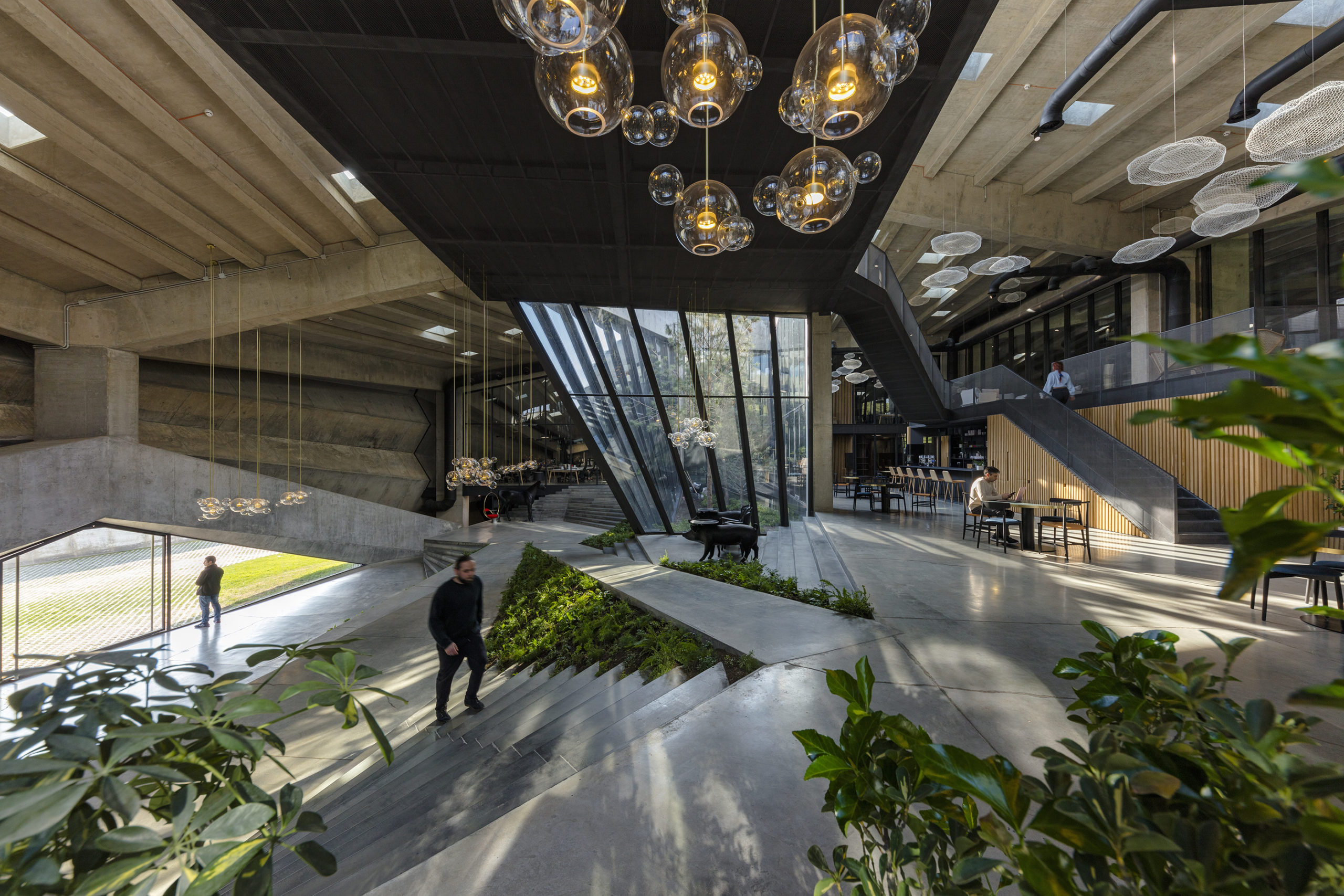
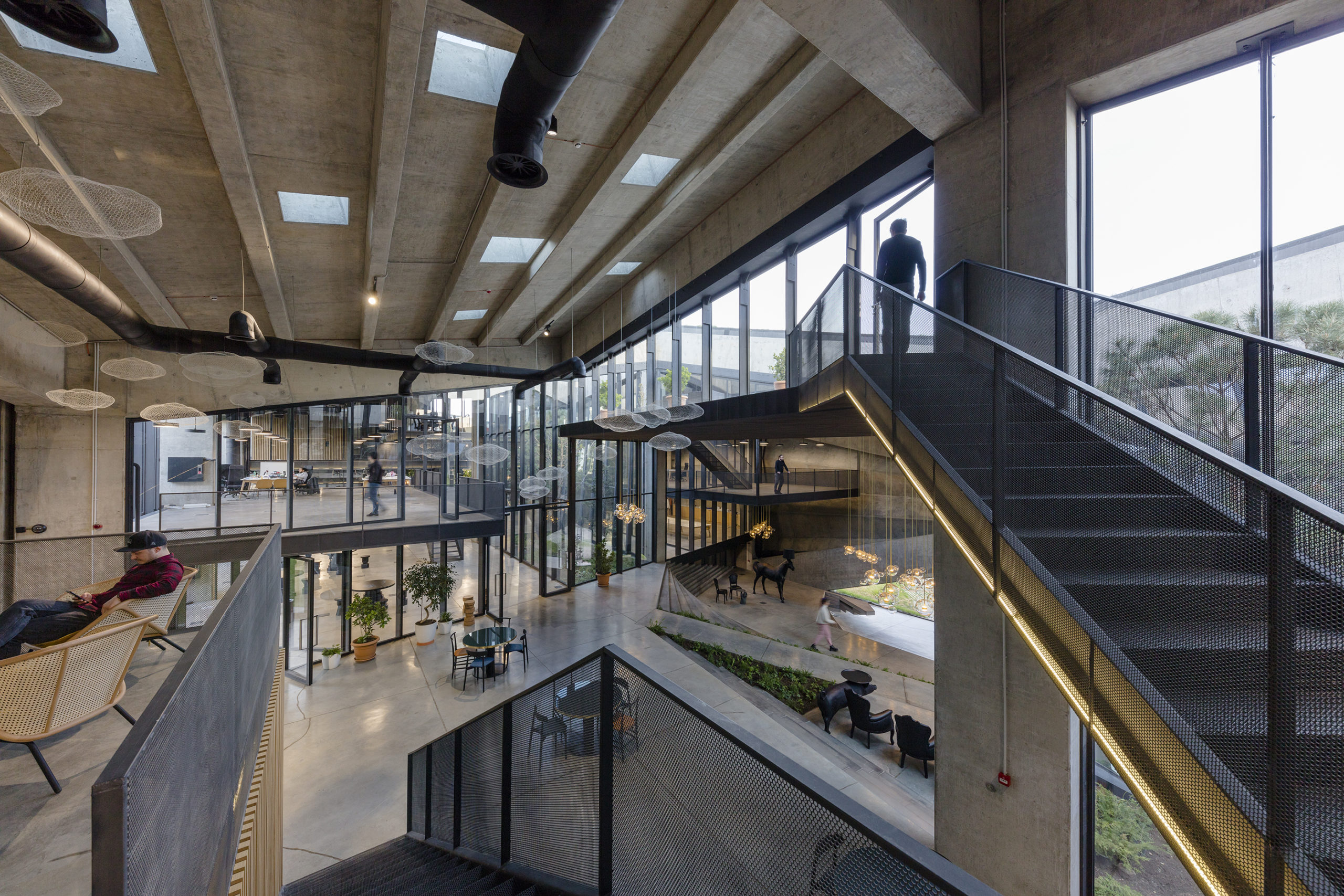
3. Introduce Spatial Dynamism
The uninterrupted ribbon of the plant’s concrete perimeter strategically lifts in one area, offering the visitor a memorable entryway that opens to an expansive main lobby. This towering space is framed by three green atriums, which are offset by multilevel platforms that display coffee exhibits.
Housing over 96,875 square feet of floor space, the interior scheme not only responds to the multi-pronged program required by Meama, but offers a unique take on it. Avoiding the usual factory or office typologies, instead, work and meeting spaces wrap around the box-like volume of the production plant at various levels, resulting in a unique L-shaped floor plan. Rather than separating out these different functions, openness and spatial fluidity are prioritized. Throughout the design, walls serve as physical but not visual barriers: the majority consist of either transparent glass or slatted wood.
Rest areas and more social work spaces are suspended on open-air platforms one-story above, overlooking the activity below and adding a dynamism to the already active work environment. Numerous skylights create an even illumination throughout and bolster the salubrious effects of the three atriums, which serve as uniting elements to further enhance the connectivity of the indoor space, where greenery is visible at all times. 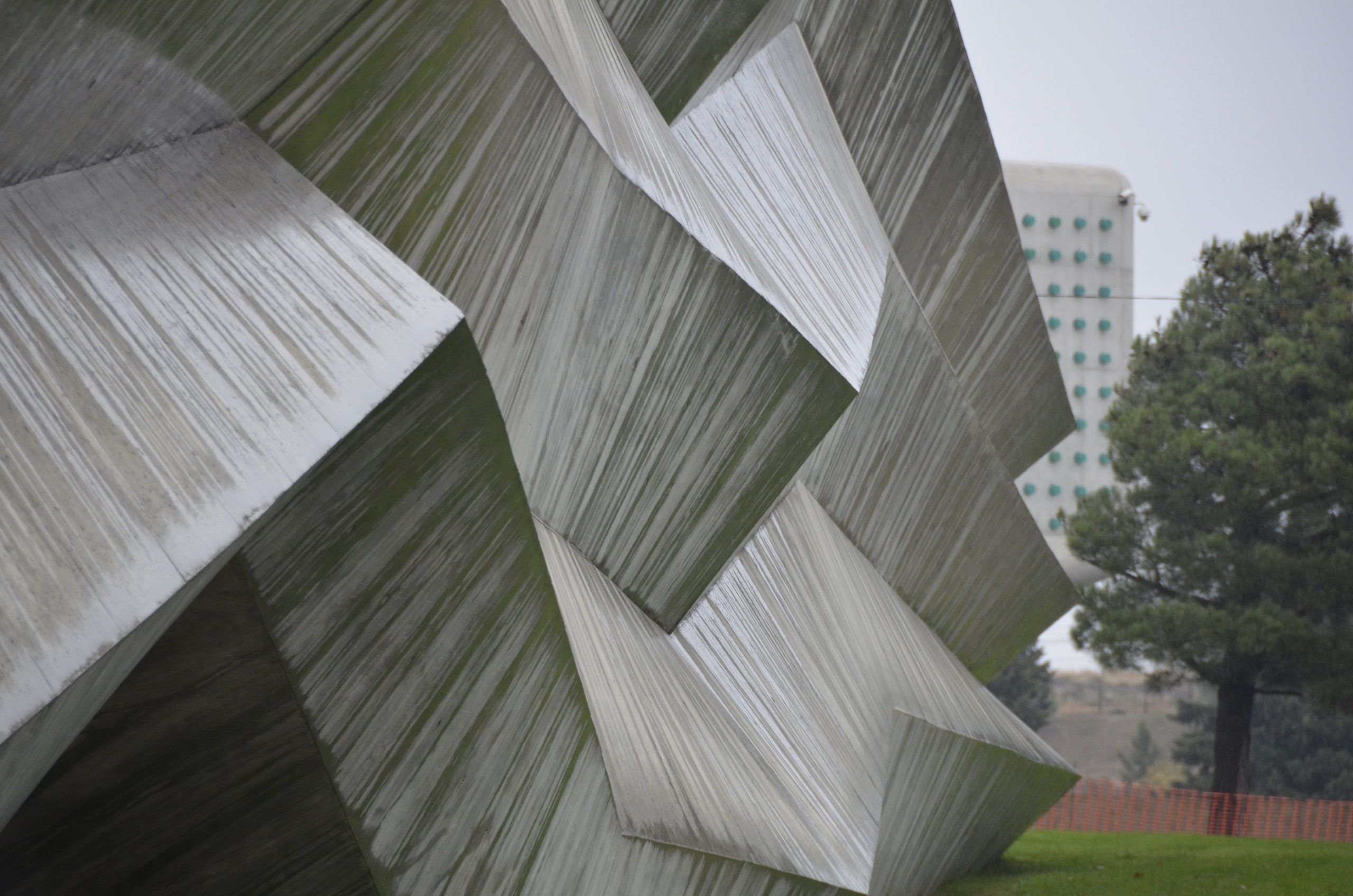
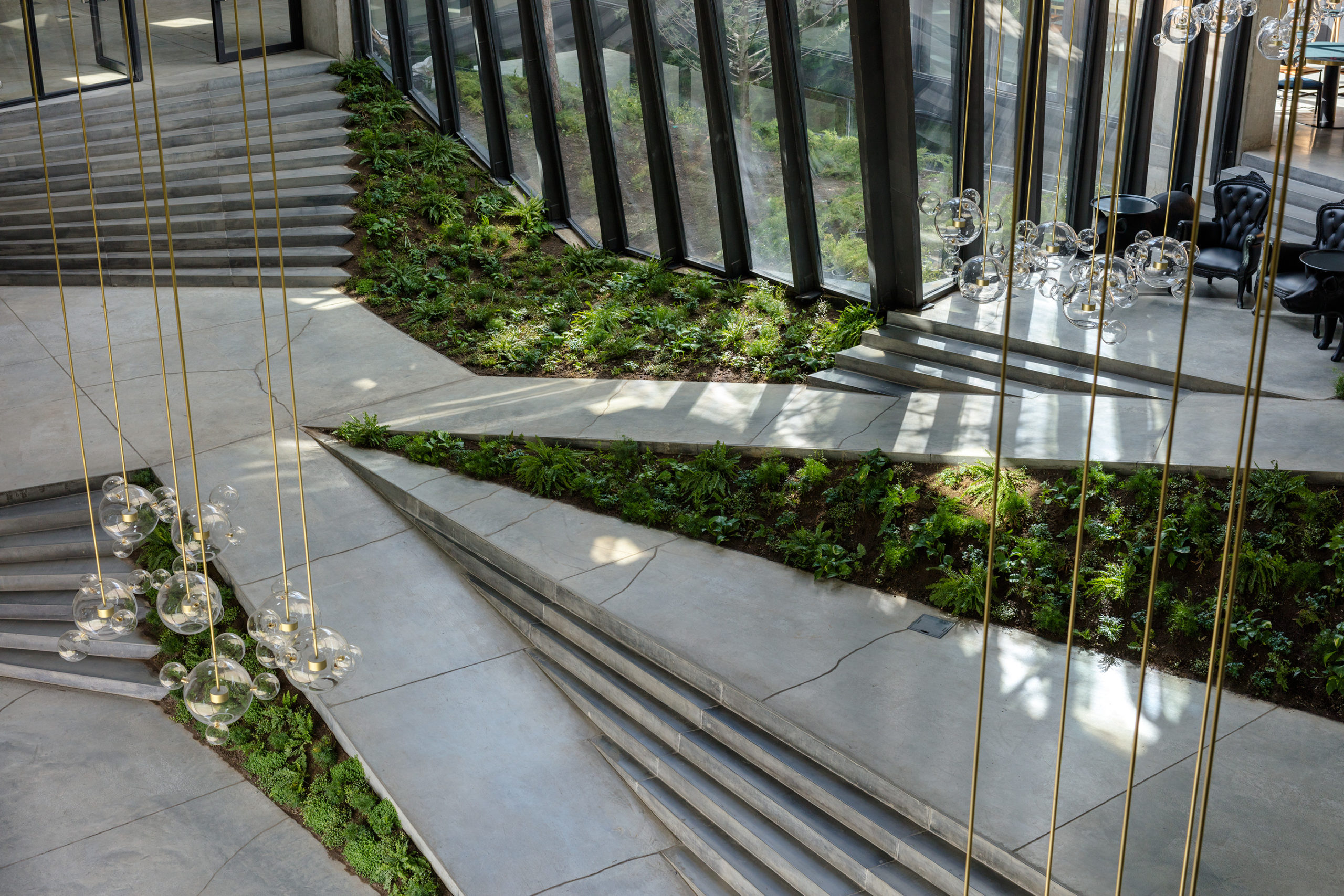
4. Pay Attention to Detail
It’s the little things that make a difference, in life and in architecture (as per Mies’ famous adage). In the Meama Coffee Production Plant, close attention to small details make all the difference.
Take for instance the folding form of the concrete façade, whose appearance changes throughout the day as the sun dances over its geometries. Emphasizing its sculptural appearance through a play of light and shadows, the double-curved folds add an element of mystery or intrigue, avoiding the potential homogeneity of having a monolithic façade. This nuance is amplified by the attention paid to textural detail when casting the concrete. Poured in situ, the linear imprints left by the formwork trace in varying directions, charging prismatic protrusions with an additional liveliness.
Meanwhile, the thematic duality of concrete and greenery permeates every aspect of the design: in the atrium, mosses and ferns sprout between sweeping amphitheater-esque steps that fan out at various angles, further confounding any clear distinction between building and environment.
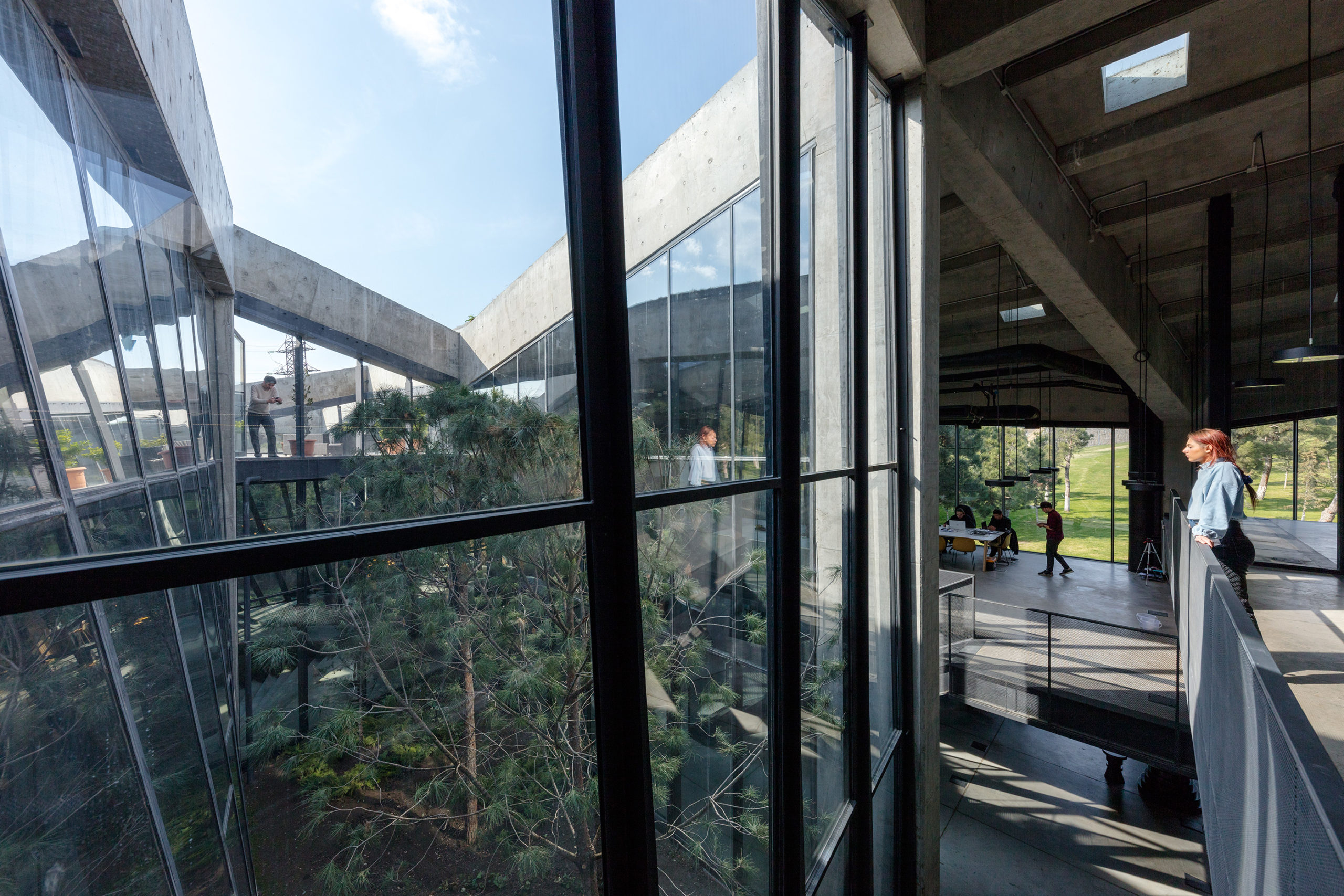
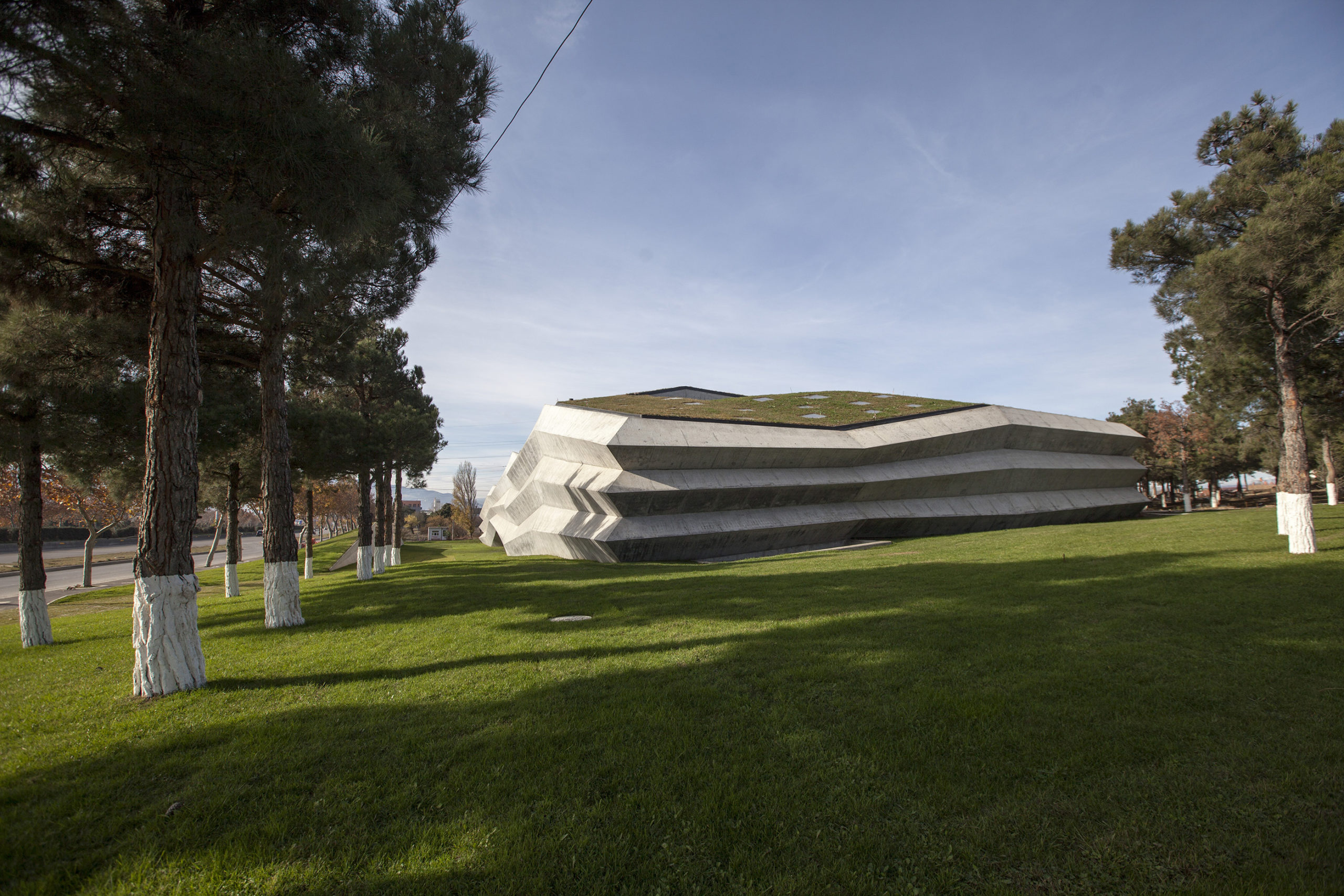
5. Consider the Environmental Impact
In the 21st century and the age of the Anthropocene, environmental considerations have become more pressing than ever, and the Meama Coffee Production Plant illustrates several key considerations when designing for a healthier planet.
Externally, the 39, 611 sq ft green roof—the first of its kind in Georgia—announces these intentions. Planted with entirely local species, the decision to use wild grasses and plants found on the site not only augments the blending of buildings with surroundings, but the native vegetation also requires less maintenance, since they are already adapted to the local conditions. Beyond its aesthetic role, the greenery also provides an additional thermal barrier to the roof insulation. This, coupled with the double-layer insulated concrete wrapping, contributes to a more energy-efficient building.
Meanwhile, the abundance of skylights and atriums invite ample natural light to illuminate the interior, lessening the need for extensive artificial light throughout. Finally, the most sustainable building is one that already exists, and by treating the concrete with PENETRON ADMIX to ensure its durability, the architects anticipate a long life span for the new structure.
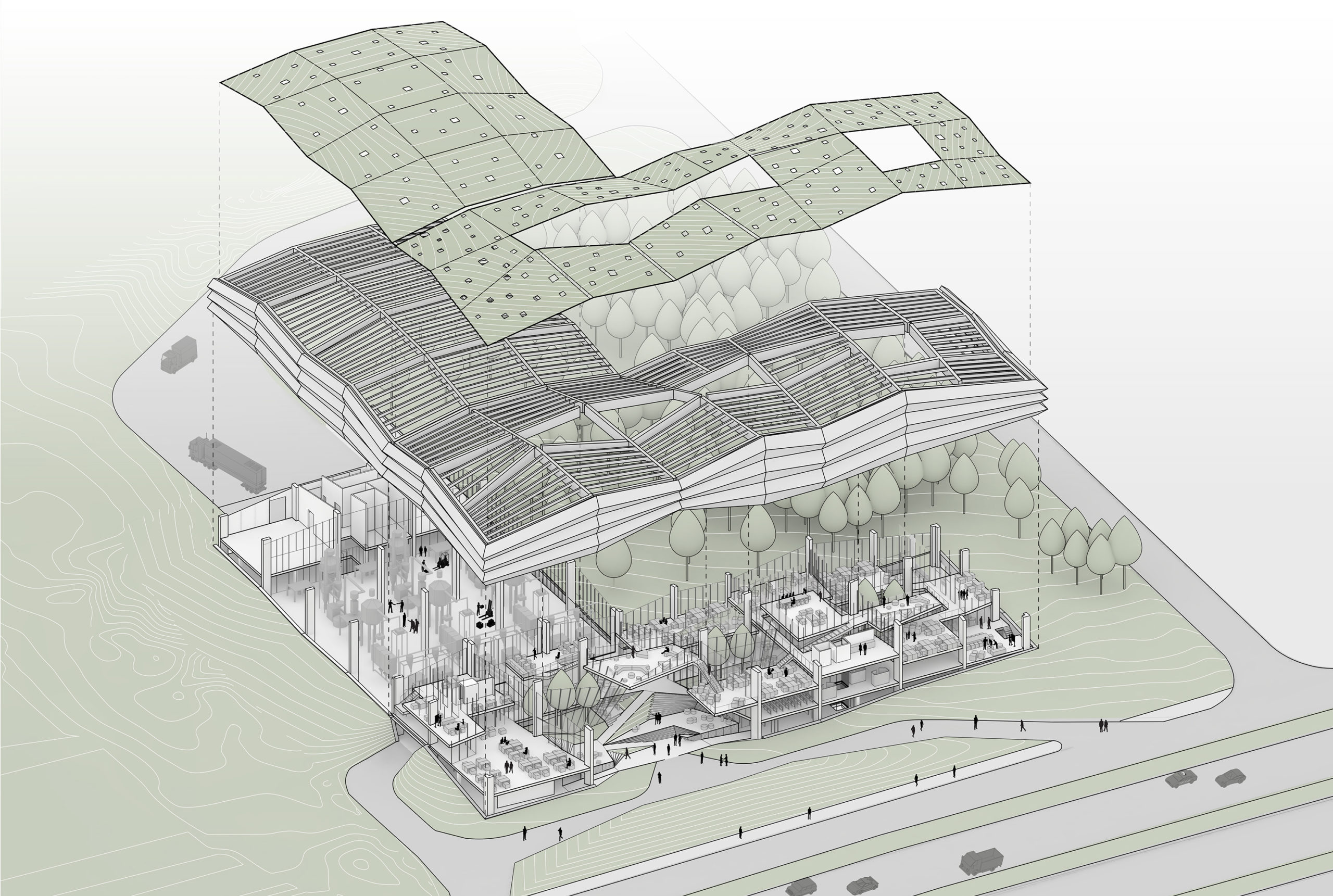
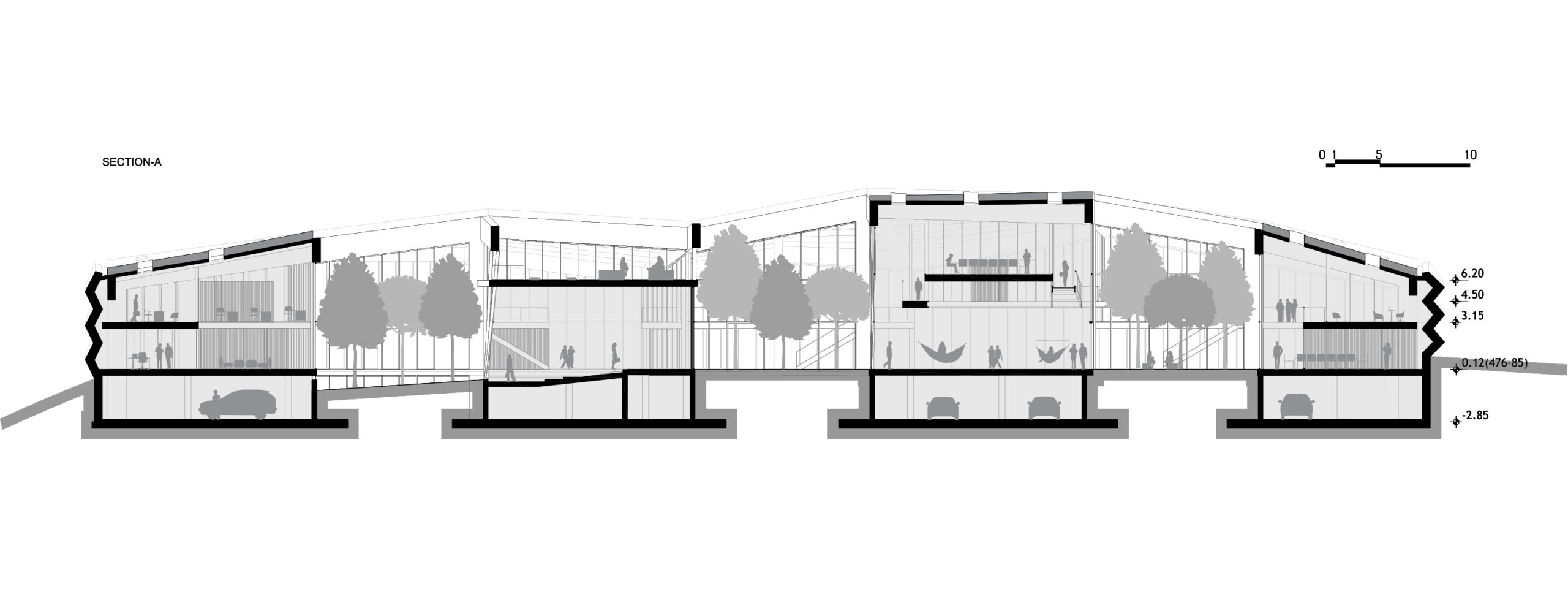
Now you have the secrets to success, you’re ready to participate! Submit your best new projects for worldwide recognition and international publication, both in print and online. Hit the button below to get started on your entry:

